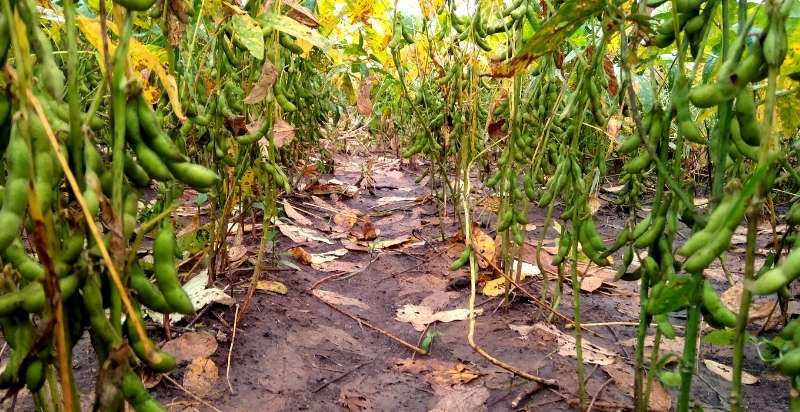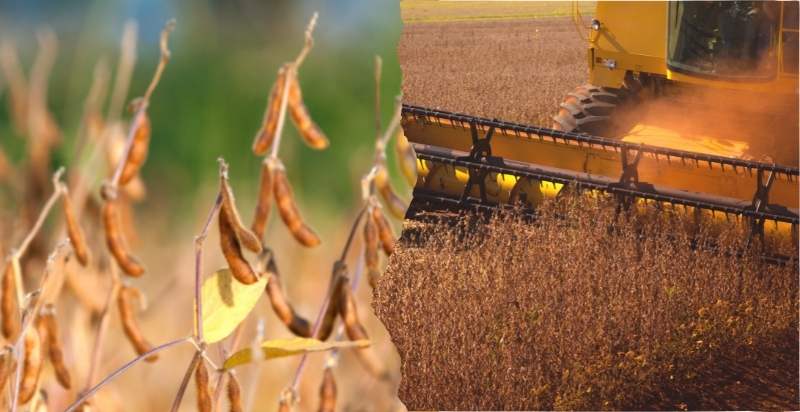Edamame, also known as soybeans, is a young green vegetable harvested before they reach full maturity. They have a mildly sweet and nutty flavor, often enjoyed with Japanese dishes or as a snack. Edamame beans contain nutrients, including protein, calcium, iron, and vitamins A and C. To enjoy edamame at its fullest potential, it’s important to know how to select, prepare and eat them properly. So here is everything you need to know about Edamame.
What is Edamame (Soybeans)?
Edamame is young, green soybeans harvested before they reach full maturity. When cooked, they have a mildly sweet and nutty flavor, making them popular in Japanese dishes or as a snack. The immature soybeans are also highly nutritious, containing high levels of protein, calcium, iron, and vitamins A and C.
History and Origin of Edamame:
The history of edamame is closely linked to its original countries of origin, Japan and China. Edamame has been a staple in Japanese diets for centuries, with records dating back to the 8th century. It is believed that the Chinese first domesticated soybeans over 3,000 years ago and that this knowledge spread through trade routes to other parts of Asia, such as Japan.
Types of Edamame:
There are two main types of edamame, black and green. The green edamame beans have a milder flavor and softer texture than the black ones, which tend to have a firmer texture. Both varieties can be enjoyed in different recipes or as a snack.
Nutrition of Edamame (Soybeans):
Edamame is one of the most nutrient-dense foods available. It is packed with essential vitamins and minerals, including protein, calcium, iron, and vitamins A and C. Edamame is also high in fiber and low in calories, making it a great addition to any healthy diet.
Health Benefits of Edamame:
Edamame beans are high in fiber and contain many essential vitamins and minerals, including protein, calcium, iron, and vitamins A and C. Eating edamame regularly can help promote healthy weight management, reduce cholesterol levels and strengthen bones due to its high calcium content. Additionally, edamame has been linked to a lower risk of cancer due to its high levels of antioxidants and isoflavones.
How to Plant Edamame?
Edamame (soybeans) is a versatile and nutritious crop that can be grown in any garden. Not only are they delicious, but they are also incredibly easy to grow! You can grow edamame in your yard or garden with just a few simple steps and patience.
This guide will cover everything you need to know about how to plant edamame, from choosing the right variety, preparing the soil, and planting the seeds. We’ll also talk about harvest time, storage tips, and some health benefits of eating edamame. So, let’s learn how to grow your delicious edamame!
Choosing a Variety:
The first step in growing edamame is to choose a variety. There are wide varieties of edamame, and each has a distinct flavor, texture, and growth habit. Some popular varieties include Eda-Mae Dwarf, Midori Giant, and Soyu. Consider your climate and the amount of space you have available when selecting a variety.
Preparing the Soil:
Once you’ve chosen the right variety for your garden, it’s time to prepare the soil. Edamame prefers fertile, well-drained soil that is high in organic matter. The pH should be between 6.0 and 8.0, so if necessary, add lime to raise the pH or sulfur to lower it. Work compost or other organic matter into the soil before planting, as this will help improve drainage and aeration while providing essential nutrients for growth.
Planting:
When temperatures reach at least 60 degrees Fahrenheit (15°C), you can begin to plant edamame. Sow seeds 1-2 inches deep and 3-4 inches apart in rows that are spaced 18-24 inches apart. For taller varieties, you may want to provide support, such as a trellis or stake for the plants to climb on. Water regularly during the growing season, making sure not to overwater as this can lead to root rot.

How to Care For Edamame Plant?
Once your edamame is planted, you can take a few simple steps to ensure the plants remain healthy and productive. Remove any weeds that may compete with your plants for water and nutrients, and keep the soil evenly moist throughout the growing season.
You can also fertilize with an organic fertilizer every two weeks to give your edamame an extra boost of nutrients. Finally, if you live in a particularly hot climate, provide some shade for your plants during the hottest day.

Preventions From Pests and Diseases:
To ensure a healthy harvest, it’s important to be aware of and prevent common pests and diseases that can affect edamame. Select varieties resistant to thrips, spider mites, aphids, whiteflies, bacterial wilt, rust, and other common pests and diseases. Additionally, practice good garden hygiene by cleaning up debris after each harvest and regularly rotating crops. This will help reduce the risk of infestations or disease in your garden.
How to Harvest Edamame (or Soybeans)?
The ideal time to harvest edamame is when the pods are still green and tender and before the beans inside begin to harden. This usually occurs about two months after planting. To harvest, snap or cut off each pod from the plant. Pods can be eaten fresh or frozen for later use.

Potential Risks From Soybeans:
Although edible, edamame does contain some potential risks. The plant contains oxalates and goitrogens, which can interact with certain medications or cause adverse reactions in some people. Additionally, the plant is known to be a host for certain types of nematodes and other pests that could spread to other plants in your garden. To avoid potential problems, monitor your edamame plants regularly and practice good garden hygiene.
Conclusion:
Edamame (or soybeans) is a popular and delicious vegetable that can be easily grown in your backyard. By following the steps outlined above, you’ll be well on your way to growing your tasty edamame! With proper care and attention, you’ll have a successful harvest of this versatile and nutritious plant. So get started today – your tastebuds will thank you!
- Everything You Wanted to Know About Red Tamarillos - June 2, 2025
- A Guide to Tulips: Everything You Need to Know & More… - June 2, 2025
- Guanabana: Description, Flavor, Benefits, And Uses - May 27, 2025

2 thoughts on “How to Plant, Grow, and Harvest Edamame (Soybeans)”
Comments are closed.